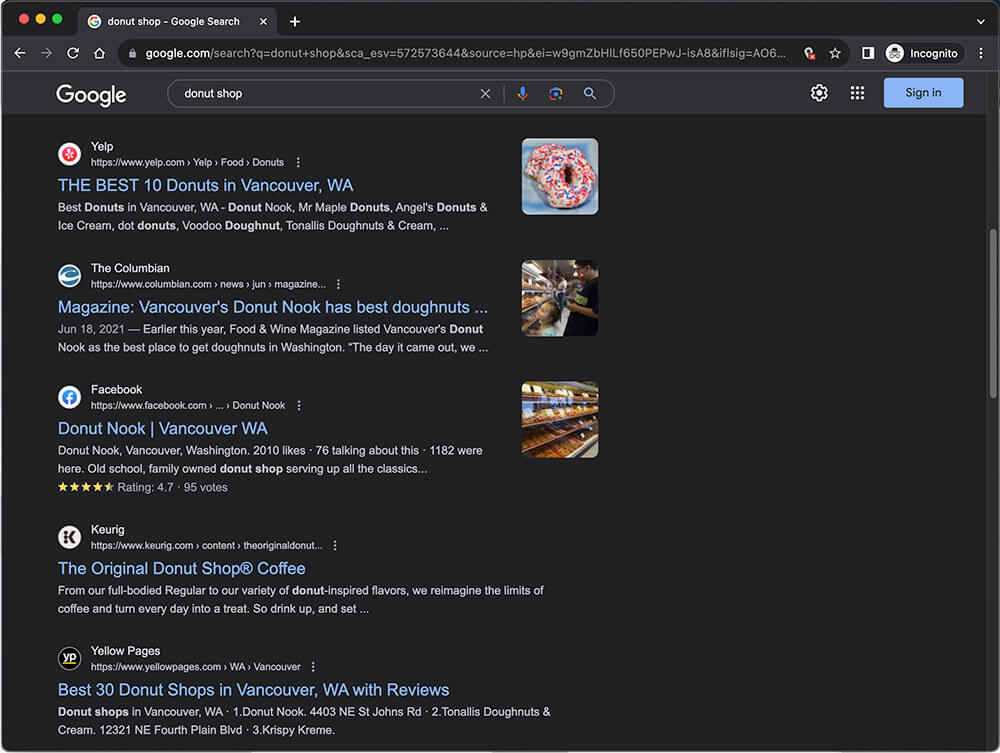The considerations we need to make when designing a website for our small business can seem endless. There’s a lot to do. We can agree on that. But questions can stack up quickly:
- How many pages should I have?
- What do I need to say?
- What should the site look like?
- What’s this “SEO” I keep hearing about?
- What else do I need to know that I don’t know?
All these questions can roll around in our minds, leading to stress, frustration, or even analysis paralysis.
The good thing is that there are plenty of written guides out there (like this one you reading now) that will help plug in answers to your questions.
Before we jump into this, though, let’s set some basic expectations of what you’ll get from reading this piece.
First, web design and development are deeply complex topics. As such, we will not be focusing on all the ins and outs related to this topic, but we will hit most of the major considerations you should be aware of.
Second, come at this with an open mind. While a website is a requirement for a modern business, no one says you need to know everything or do everything yourself. You need to understand the broad strokes so you can make a decision on whether you want to tackle this on your own, or if you want to partner with a group that can help.
So, relax, and let’s get into this.
Why Do You Need a Website?
A website is an essential marketing tool. It is the single most focused occurrence of your brand. I used to say, “…single most focused occurrence of your brand online.”, but unless you are a business mogul and have a series of stores in numerous malls of America (think Michael Kors), then the website you are building for your business will most likely be THE main place people will come to learn about your brand, about your services or products, and about what it takes to work with or purchase from you.
As such, your website needs to be good. It needs to straddle the line between educating and celebrating. It needs to inform and persuade. It needs to actively market your brand.
Why Good Website Design Matters?
It’s not unheard of for a website project to cost a small business or start-up $7k-$20k or more depending on what that site needs to encompass. A price tag like that can stop a new business owner in their tracks. We understand.
For many business owners, it’s at this point where they begin to consider a cheaper option like doing it themselves, or the guy on Craigslist that will build a site for $1,000, maybe even your cousin Jimmy. He builds websites in his spare time, right?
Starter budgets can be challenging, but good web design is an investment. It’s easy enough to cut corners and go with one of the cheaper options above, but what are you sacrificing? Is it better to have a website that you saved a few bucks on, but when it’s launched it doesn’t do anything to help you generate business? As they say, “You get what you pay for.”
Next, let’s look at a few elements of good web design that are often overlooked by the cheaper option.
Elements of a Good Website
Good web design is a process, and that takes time. Professional teams are trained to focus on the elements that make up good web design. They employ a mix of strategy, design fundamentals, user experience, expertise, common sense, and best practice to create a site that not only looks good but draws people to it.
Let’s examine just a few of the broader considerations to good website design.
Content
There is a modern adage that, “Content is king.” And it’s absolutely the truth. The content that makes up our site is multi-faceted. We employ imagery, video, animation, text, and even metadata to educate and inform potential customers of a brand’s intent.
Gathering these content elements is not a hard job, but employing the strategy that arranges these elements into a system that clarifies your message and filters people through it in a way that moves them along the sales cycle takes some experience, and again, time.
Yet, if content really is king, then making sure it benefits your business by driving sales should be paramount.
Design
Having well-written, clear content is important, but pairing it with a solid, visual design is essential. On average, we have less than 3 seconds to “hook” a user when they arrive on our website. Can you guess which element (visual or textual) makes that first impression in just 3 seconds? Most often in user experience testing, people reported the “impression” of the visual design more than the text when they saw a quick flash of a webpage.
If you think about your own browsing habits, how likely are you to remain on a site if it’s visually unappealing?
Because our minds are so geared to the visual nature of things, it’s important that we have good-looking web pages. If you think about your own browsing habits, how likely are you to remain on a site if it’s visually unappealing? Even if the content is some of the best you’ve ever read, it will be less appealing and harder to digest because of its ugly wrapper.
Professionals are trained to focus on marrying well-produced content with striking and on-brand visual design. It’s when these two things come together we begin to see users experience synesthesia across their sessions.
User Experience
So, we’ve established the basics of why content is king and how essential good visual design is for a business website. User experience (UX) adds another fold to this dimensional study by looking at how people will use a website to achieve their goals.
We often use the term “goal-driven design” to describe the root process of UX. Understanding how a person will want (and need) to use a site in order to do what they want to do on a website is crucial. People don’t have a lot of time. They want to look over a site and get what they need from it in the shortest and most direct path available.
UX is about understanding those motivations and then building systems of use that foster those user patterns. If your site is not allowing people to quickly achieve their goals, or worse, is frustrating them, then it’s being done wrong.
Search Engine Optimization
All three of the former elements discussed play a hand in search engine optimization (SEO) to an extent, but SEO is a large topic. For our purposes, though, let’s start with a very simple definition.
The root purpose of SEO is to make a website findable on search engines like Google or Bing.
When we want to know something more about a particular topic or we are looking at a particular service, our first stop is generally a search engine and some basic search terms.

SEO is what helps a website to show up on the search results page for a relevant search term. So, as an example, if I’m a donut maker, I definitely want my website to show up under terms like “donut shop” or “donut shop near me” on the web.
This only happens if a search engine understands why your website should show up under those terms and sees your content (visual and textual) as relevant enough to fit into this pack of search results.
The way a search engine knows the relevancy of your website is by crawling the content with small programs called spiders (or bots) that read the content and make determinations on the relevancy of what is there.
This is really a simplification of what goes into this process. There are hundreds of metrics that can be set and adjusted to fine-tune the perceived relevancy of a website. It’s just more proof that good web design is a process that takes time and professionals to make your website good.
Security and Maintenance Considerations
Another area of consideration is regarding the security of your website once it’s been launched. Knowing how to set up the site so that it is hosted securely using strong SSL site encryption is essential to keeping not only your data but your user’s data safe.
There are plenty of people out there looking to exploit (read hack) a website just because they can. There are just as many out there that will hack a website for the data that is stored on it. For those reasons, making sure your website is secure and up-to-date is essential.
There are plenty of people out there looking to exploit (read hack) a website just because they can. There are just as many out there that will hack a website for the data that is stored on it.
Looking into security programs like Sucuri or Wordfence can help to keep unwanted people out of your site.
Making sure your website is backed up on a regular basis and up to date is another layer in the security and maintenance layer cake that will keep your content safe. Nothing is worse than having your site compromised and realizing you don’t have a solid backup of the site to restore from.
A professional design firm will continue to help put solid strategies in place for the long term.
Moving Ahead
This seems like a good place to stop. There’s a lot to chew on here, and more to consider beyond these very broad topics. Hopefully, though this will have you thinking for the next several days. Additionally, let’s hope it has ticked off a few boxes for questions you might have faced.
Good Websites are A Lot of Work
Here’s what I know: making decisions about web design can be a challenge. To do it right requires a lot of time and effort. It’s not impossible, but what should be a clear takeaway after reading this is that your site needs to do more than just sit there. A good site enables educates people and advances them through the sales cycle.
When to Consider a Partner
As we’ve established to have a good website takes a lot of work and time to do right — hence the price tag that normally comes with a professional project and its team. That larger price tag might be a financial hurdle to overcome but don’t just dismiss it out of hand.
As a new business, you need as many ways to generate business as possible. Because of that, you don’t really have the option of not having a good website that creates leads.
Good web design is an investment, which means you might need a team to support you. You won’t get that from Cousin Jimmy or from a cut-rate web project.
Rebel Agency’s model is not about cutting prices (good websites cost money), but rather about extending the costs of a website project over a period of months. In this way, a good website is more attainable for new businesses or start-ups, allowing them to start strong with their marketing and branding collateral.
